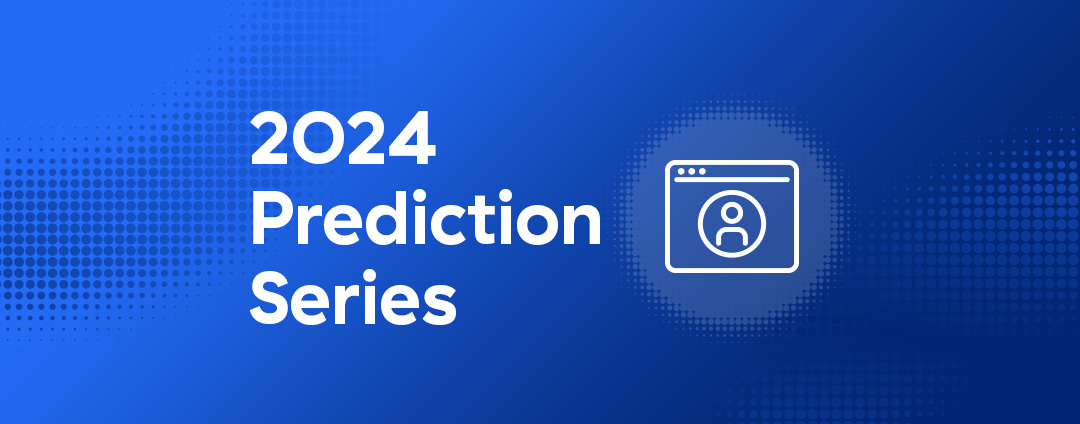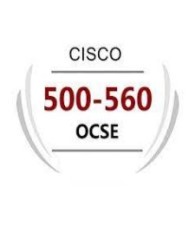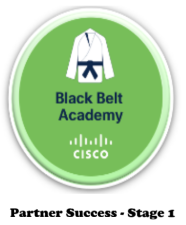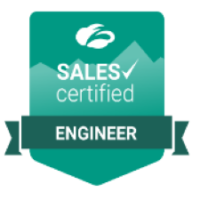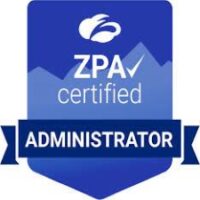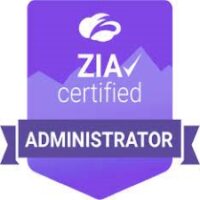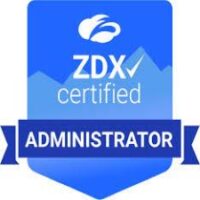In 2023, we’ve seen an increase in companies focused on maximizing growth as it relates to productivity and innovation. Employers were looking to optimize employee experiences and reduce costs in hopes of driving increased revenues. According to Great Place To Work, 2023 revenue per employee for Fortune 100 Best Companies increased by 7% YoY, up from 4% from 2022.
Revenue per employee increased in 2023
To ensure great employee productivity, companies need secure and fast application and data access from home, hotels, airports, and the office. This is confirmed by Hyatt’s recent earnings where they saw a 2x increase as travel surged, compared to pandemic levels. These trends continue to push IT teams to support employees as they securely access SaaS, public, and private cloud applications, (e.g., Salesforce.com, SAP, Microsoft Office 365, ServiceNow) from anywhere.
Globally distributed enterprise is today’s reality
However, if organizations continue to leverage legacy network architectures that rely on VPNs and firewalls, they are more susceptible to attacks. These technologies expand an organization’s attack surface as they place users directly on a routable network. In a recent VPN risk report, 45% of organizations confirmed experiencing at least one attack that exploited VPN vulnerabilities in the last year. Of those, one in three became victims of VPN-related ransomware attacks. Security does not have to be a tradeoff for fast and reliable access.
In a recent post, we analyzed the last 12 months of conversations with hundreds of IT professionals about their employee experience and they reported similar findings; that they lack visibility into Wi-Fi and ISP networks. Their current tools struggle to consolidate device, network, and application details such as system processes, memory, CPU, network latencies, packet loss across network hops, and application response times (DNS, SSL handshake, HTTP/TCP connect).
IT must secure and optimize experiences even when networks are out of their control. Businesses continue to rethink their digital transformation journey to ensure a flawless end user experience while securing users, workloads, and devices over any network, anywhere. As both travel and revenue per employee increases, employers are learning how to optimize costs and employee productivity across the board.
As we kick off 2024, one thing is clear: understanding how employee experience can impact revenue as a driving force to increasing profits is key.
To aid IT teams, organizations need a better path forward, one that is designed with security and optimized end user experience driven by actionable AI.
As organizations look forward to 2024, three top digital experience monitoring trends emerge:
Zero trust growth will require integrated digital experience monitoring (DEM)
AIOps is a requirement, not a “nice to have,” to reduce mean time to resolution
Reduce overall IT costs
Zero trust growth will require integrated DEM
As organizations look to secure their environments leveraging zero trust architectures, they need an integrated digital experience monitoring solution to ensure flawless end user experience no matter where they are located. As we found in our customer conversations, many organizations fail to gain insights into zero trust environments with existing monitoring solutions. They also lack full end-to-end visibility such as last-mile ISP and Wi-Fi insights. Adding to the complexity, managing and correlating data across multiple tools for device, network, and application is time-consuming and frustrating to the end user.
Zero trust solutions must include DEM by simplifying deployment through a single agent that combines security and monitoring. Monitoring insights should include device metrics (CPU, memory, disk, network bandwidth), network metrics (hop-by-hop latencies, packet loss, jitter, MOS scores, DNS times), application response times (TCP Connect, SSL handshake, HTTP Connect, TTFB, TTLB times), with intuitive correlation to help service desk and network operations teams
AIOps is a requirement, not a “nice to have,” to reduce mean time to resolution (MTTR)
As we’ve seen in 2023, generative AI has completely changed the industry, and we’ve seen new applications emerge that create data at exponential rates. We are only scratching the surface of the potential with these apps. Much of this data may not be seen by humans. However, insights from this data could be critical for organizations. Organizations may access thousands of SaaS-based applications to create solutions (e.g., images, text, code) to increase productivity. As these applications become critical for organizations, they must ensure their availability.
For example, talking to a manufacturing company, they shared how they leverage generative AI to decrease the time required to produce website content. They take hand-drawn images and upload them into a generative AI solution to create hundreds of images based on different scenarios. This typically takes months, but it now takes minutes and frees up their team to think more strategically.
However, to gain efficiency, IT must play many roles regarding the security and availability of these applications. Beyond the guardrails required, IT must ensure employees have access to the tools the business needs, which adds to the cost and complexity. Monitoring these new SaaS applications wherever the user connects will keep employees productive. As organizations look to increase employee productivity, security, network, and service desk, teams must collaborate closely to ensure excellent end user experiences.
Providing meaningful insights for all the IT teams requires relevant data. Zero trust monitoring solutions must have machine learning models based on years of data across millions of telemetry points to be effective. As data is collected, these models must adapt and learn based on end user feedback to efficiently identify the root cause of issues.
There are three key areas IT teams need to consider:
Proactively identify recurring issues before users are impacted. For example, if a certain Wi-Fi router shows repeated issues, network teams can work with service desk teams and end users to proactively replace Wi-Fi routers so end users continue to have great access.
Empower service desk teams to either resolve issues or escalate with confidence. For example, if an end user complains about an SAP issue, the service desk team must know a potential root cause in seconds, and route it to the appropriate L3 team. They will need an intuitive AI solution to identify the issue in seconds and share those insights.
Drive increased monitoring intelligence with continuous updates to machine learning models. Zero trust monitoring solutions must expand monitoring vantage points and collect new insights to aid IT teams.
Reduce overall IT costs
As we’ve seen in 2023, macroeconomics are forcing organizations to think about maximizing productivity and profits. In 2023, many organizations have started their journey to zero trust solutions, and are ready to embark on integrating their security and monitoring stacks. In 2024, we’ll see leaders at these organizations ask tough questions around monitoring zero trust environments without adding complexity to their IT architectures. This will set organizations apart, as ones that have the right zero trust architecture will have included monitoring as part of the journey. Not only will it provide better insights for network operations and service desk teams, it will lower overall IT costs. They will be able to retire siloed monitoring solutions to reduce costs and gain better insights.
For example, if service desk, desktop, network, and application teams all leveraged the same monitoring solution, they could confidently provide IT leaders with key insights and remove finger pointing, which still occurs as teams hardly look at the same datasets. IT leaders will want a consolidated monitoring stack to answer the following questions:
What’s the root cause of Zoom, Teams, and Webex call quality issues and how do I correlate it to the end user’s device, network, and application?
We leverage VPNs for private applications and experience application slowness. How do I identify if it’s the device’s CPU or one of the hops in the network?
My users blame security for application slowness. How can we quickly verify it’s not?
As we saw in 2023, organizations want to leverage existing IT investments where possible. Apart from consolidating their monitoring silos, in 2024, organizations will want to leverage existing ticketing systems. To do so, zero trust monitoring solutions must take AI-powered insights and push them into where service desk and network operations teams live. For example, many organizations have ServiceNow workflows, and smart integrations will provide IT teams with key insights to resolve issues in minutes.
Summary
As IT teams start planning 2024, it’s key to find digital experience monitoring solutions that effectively support the hybrid workforce, leverage AI-assistance, and drive overall IT lower costs. As you embark on your 2024 initiatives, consider Zscaler’s Digital Experience monitoring solution. Please don’t take our word for it. See what our customers are saying:
“15 minutes to resolve user experience issues, down from 8 hours” Jeremy Bauer, Sr. Director Information Security, Molson Coors Beverage Company
“Zscaler helps us identify the issues that need to be addressed before they cause disruption to AMN users, so we can ensure a seamless experience from anywhere.” Mani Masood, Head of Information Security, AMN Healthcare
“When I open my computer, it doesn’t matter if I’m in California, Arizona, Nevada, or across the globe, I get the same experience and the same level of protection.” David Petroski, Senior Infrastructure Architect, Southwest Gas
Interested to learn more about ensuring great digital experiences in 2024? Click here for Zscaler’s perspectives. This blog is part of a series of blogs that look ahead to what 2024 will bring for key areas that organizations like yours will face. The next blog in this series covers hybrid work predictions for 2024.
Forward-Looking Statements
This blog contains forward-looking statements that are based on our management’s beliefs and assumptions and on information currently available to our management. The words “believe,” “may,” “will,” “potentially,” “estimate,” “continue,” “anticipate,” “intend,” “could,” “would,” “project,” “plan,” “expect,” and similar expressions that convey uncertainty of future events or outcomes are intended to identify forward-looking statements. These forward-looking statements include, but are not limited to, statements concerning: predictions about the state of the cyber security industry in calendar year 2024 and our ability to capitalize on such market opportunities; anticipated benefits and increased market adoption of “as-a-service models” and Zero Trust architecture to combat cyberthreats; and beliefs about the ability of AI and machine learning to reduce detection and remediation response times as well as proactively identify and stop cyberthreats. These forward-looking statements are subject to the safe harbor provisions created by the Private Securities Litigation Reform Act of 1995. These forward-looking statements are subject to a number of risks, uncertainties and assumptions, and a significant number of factors could cause actual results to differ materially from statements made in this blog, including, but not limited to, security risks and developments unknown to Zscaler at the time of this blog and the assumptions underlying our predictions regarding the cyber security industry in calendar year 2024.
Risks and uncertainties specific to the Zscaler business are set forth in our most recent Quarterly Report on Form 10-Q filed with the Securities and Exchange Commission (“SEC”) on December 7, 2022, which is available on our website at ir.zscaler.com and on the SEC’s website at www.sec.gov. Any forward-looking statements in this release are based on the limited information currently available to Zscaler as of the date hereof, which is subject to change, and Zscaler does not undertake to update any forward-looking statements made in this blog, even if new information becomes available in the future, except as required by law.
Forward-Looking Statements
This blog contains forward-looking statements that are based on our management’s beliefs and assumptions and on information currently available to our management. The words “believe,” “may,” “will,” “potentially,” “estimate,” “continue,” “anticipate,” “intend,” “could,” “would,” “project,” “plan,” “expect,” and similar expressions that convey uncertainty of future events or outcomes are intended to identify forward-looking statements. These forward-looking statements include, but are not limited to, statements concerning: predictions about the state of the cyber security industry in calendar year 2024 and our ability to capitalize on such market opportunities; anticipated benefits and increased market adoption of “as-a-service models” and Zero Trust architecture to combat cyberthreats; and beliefs about the ability of AI and machine learning to reduce detection and remediation response times as well as proactively identify and stop cyberthreats. These forward-looking statements are subject to the safe harbor provisions created by the Private Securities Litigation Reform Act of 1995. These forward-looking statements are subject to a number of risks, uncertainties and assumptions, and a significant number of factors could cause actual results to differ materially from statements made in this blog, including, but not limited to, security risks and developments unknown to Zscaler at the time of this blog and the assumptions underlying our predictions regarding the cyber security industry in calendar year 2024.
Risks and uncertainties specific to the Zscaler business are set forth in our most recent Quarterly Report on Form 10-Q filed with the Securities and Exchange Commission (“SEC”) on December 7, 2022, which is available on our website at ir.zscaler.com and on the SEC’s website at www.sec.gov. Any forward-looking statements in this release are based on the limited information currently available to Zscaler as of the date hereof, which is subject to change, and Zscaler does not undertake to update any forward-looking statements made in this blog, even if new information becomes available in the future, except as required by law.
In 2023, we’ve seen an increase in companies focused on maximizing growth as it relates to productivity and innovation. Employers were looking to optimize employee experiences and reduce costs in hopes of driving increased revenues. According to Great Place To Work, 2023 revenue per employee for Fortune 100 Best Companies increased by 7% YoY, up from 4% from 2022.
Revenue per employee increased in 2023
To ensure great employee productivity, companies need secure and fast application and data access from home, hotels, airports, and the office. This is confirmed by Hyatt’s recent earnings where they saw a 2x increase as travel surged, compared to pandemic levels. These trends continue to push IT teams to support employees as they securely access SaaS, public, and private cloud applications, (e.g., Salesforce.com, SAP, Microsoft Office 365, ServiceNow) from anywhere.
Globally distributed enterprise is today’s reality
However, if organizations continue to leverage legacy network architectures that rely on VPNs and firewalls, they are more susceptible to attacks. These technologies expand an organization’s attack surface as they place users directly on a routable network. In a recent VPN risk report, 45% of organizations confirmed experiencing at least one attack that exploited VPN vulnerabilities in the last year. Of those, one in three became victims of VPN-related ransomware attacks. Security does not have to be a tradeoff for fast and reliable access.
In a recent post, we analyzed the last 12 months of conversations with hundreds of IT professionals about their employee experience and they reported similar findings; that they lack visibility into Wi-Fi and ISP networks. Their current tools struggle to consolidate device, network, and application details such as system processes, memory, CPU, network latencies, packet loss across network hops, and application response times (DNS, SSL handshake, HTTP/TCP connect).
IT must secure and optimize experiences even when networks are out of their control. Businesses continue to rethink their digital transformation journey to ensure a flawless end user experience while securing users, workloads, and devices over any network, anywhere. As both travel and revenue per employee increases, employers are learning how to optimize costs and employee productivity across the board.
As we kick off 2024, one thing is clear: understanding how employee experience can impact revenue as a driving force to increasing profits is key.
To aid IT teams, organizations need a better path forward, one that is designed with security and optimized end user experience driven by actionable AI.
As organizations look forward to 2024, three top digital experience monitoring trends emerge:
Zero trust growth will require integrated digital experience monitoring (DEM)
AIOps is a requirement, not a “nice to have,” to reduce mean time to resolution
Reduce overall IT costs
Zero trust growth will require integrated DEM
As organizations look to secure their environments leveraging zero trust architectures, they need an integrated digital experience monitoring solution to ensure flawless end user experience no matter where they are located. As we found in our customer conversations, many organizations fail to gain insights into zero trust environments with existing monitoring solutions. They also lack full end-to-end visibility such as last-mile ISP and Wi-Fi insights. Adding to the complexity, managing and correlating data across multiple tools for device, network, and application is time-consuming and frustrating to the end user.
Zero trust solutions must include DEM by simplifying deployment through a single agent that combines security and monitoring. Monitoring insights should include device metrics (CPU, memory, disk, network bandwidth), network metrics (hop-by-hop latencies, packet loss, jitter, MOS scores, DNS times), application response times (TCP Connect, SSL handshake, HTTP Connect, TTFB, TTLB times), with intuitive correlation to help service desk and network operations teams
AIOps is a requirement, not a “nice to have,” to reduce mean time to resolution (MTTR)
As we’ve seen in 2023, generative AI has completely changed the industry, and we’ve seen new applications emerge that create data at exponential rates. We are only scratching the surface of the potential with these apps. Much of this data may not be seen by humans. However, insights from this data could be critical for organizations. Organizations may access thousands of SaaS-based applications to create solutions (e.g., images, text, code) to increase productivity. As these applications become critical for organizations, they must ensure their availability.
For example, talking to a manufacturing company, they shared how they leverage generative AI to decrease the time required to produce website content. They take hand-drawn images and upload them into a generative AI solution to create hundreds of images based on different scenarios. This typically takes months, but it now takes minutes and frees up their team to think more strategically.
However, to gain efficiency, IT must play many roles regarding the security and availability of these applications. Beyond the guardrails required, IT must ensure employees have access to the tools the business needs, which adds to the cost and complexity. Monitoring these new SaaS applications wherever the user connects will keep employees productive. As organizations look to increase employee productivity, security, network, and service desk, teams must collaborate closely to ensure excellent end user experiences.
Providing meaningful insights for all the IT teams requires relevant data. Zero trust monitoring solutions must have machine learning models based on years of data across millions of telemetry points to be effective. As data is collected, these models must adapt and learn based on end user feedback to efficiently identify the root cause of issues.
There are three key areas IT teams need to consider:
Proactively identify recurring issues before users are impacted. For example, if a certain Wi-Fi router shows repeated issues, network teams can work with service desk teams and end users to proactively replace Wi-Fi routers so end users continue to have great access.
Empower service desk teams to either resolve issues or escalate with confidence. For example, if an end user complains about an SAP issue, the service desk team must know a potential root cause in seconds, and route it to the appropriate L3 team. They will need an intuitive AI solution to identify the issue in seconds and share those insights.
Drive increased monitoring intelligence with continuous updates to machine learning models. Zero trust monitoring solutions must expand monitoring vantage points and collect new insights to aid IT teams.
Reduce overall IT costs
As we’ve seen in 2023, macroeconomics are forcing organizations to think about maximizing productivity and profits. In 2023, many organizations have started their journey to zero trust solutions, and are ready to embark on integrating their security and monitoring stacks. In 2024, we’ll see leaders at these organizations ask tough questions around monitoring zero trust environments without adding complexity to their IT architectures. This will set organizations apart, as ones that have the right zero trust architecture will have included monitoring as part of the journey. Not only will it provide better insights for network operations and service desk teams, it will lower overall IT costs. They will be able to retire siloed monitoring solutions to reduce costs and gain better insights.
For example, if service desk, desktop, network, and application teams all leveraged the same monitoring solution, they could confidently provide IT leaders with key insights and remove finger pointing, which still occurs as teams hardly look at the same datasets. IT leaders will want a consolidated monitoring stack to answer the following questions:
What’s the root cause of Zoom, Teams, and Webex call quality issues and how do I correlate it to the end user’s device, network, and application?
We leverage VPNs for private applications and experience application slowness. How do I identify if it’s the device’s CPU or one of the hops in the network?
My users blame security for application slowness. How can we quickly verify it’s not?
As we saw in 2023, organizations want to leverage existing IT investments where possible. Apart from consolidating their monitoring silos, in 2024, organizations will want to leverage existing ticketing systems. To do so, zero trust monitoring solutions must take AI-powered insights and push them into where service desk and network operations teams live. For example, many organizations have ServiceNow workflows, and smart integrations will provide IT teams with key insights to resolve issues in minutes.
Summary
As IT teams start planning 2024, it’s key to find digital experience monitoring solutions that effectively support the hybrid workforce, leverage AI-assistance, and drive overall IT lower costs. As you embark on your 2024 initiatives, consider Zscaler’s Digital Experience monitoring solution. Please don’t take our word for it. See what our customers are saying:
“15 minutes to resolve user experience issues, down from 8 hours” Jeremy Bauer, Sr. Director Information Security, Molson Coors Beverage Company
“Zscaler helps us identify the issues that need to be addressed before they cause disruption to AMN users, so we can ensure a seamless experience from anywhere.” Mani Masood, Head of Information Security, AMN Healthcare
“When I open my computer, it doesn’t matter if I’m in California, Arizona, Nevada, or across the globe, I get the same experience and the same level of protection.” David Petroski, Senior Infrastructure Architect, Southwest Gas
Interested to learn more about ensuring great digital experiences in 2024? Click here for Zscaler’s perspectives. This blog is part of a series of blogs that look ahead to what 2024 will bring for key areas that organizations like yours will face. The next blog in this series covers hybrid work predictions for 2024.
Forward-Looking Statements
This blog contains forward-looking statements that are based on our management’s beliefs and assumptions and on information currently available to our management. The words “believe,” “may,” “will,” “potentially,” “estimate,” “continue,” “anticipate,” “intend,” “could,” “would,” “project,” “plan,” “expect,” and similar expressions that convey uncertainty of future events or outcomes are intended to identify forward-looking statements. These forward-looking statements include, but are not limited to, statements concerning: predictions about the state of the cyber security industry in calendar year 2024 and our ability to capitalize on such market opportunities; anticipated benefits and increased market adoption of “as-a-service models” and Zero Trust architecture to combat cyberthreats; and beliefs about the ability of AI and machine learning to reduce detection and remediation response times as well as proactively identify and stop cyberthreats. These forward-looking statements are subject to the safe harbor provisions created by the Private Securities Litigation Reform Act of 1995. These forward-looking statements are subject to a number of risks, uncertainties and assumptions, and a significant number of factors could cause actual results to differ materially from statements made in this blog, including, but not limited to, security risks and developments unknown to Zscaler at the time of this blog and the assumptions underlying our predictions regarding the cyber security industry in calendar year 2024.
Risks and uncertainties specific to the Zscaler business are set forth in our most recent Quarterly Report on Form 10-Q filed with the Securities and Exchange Commission (“SEC”) on December 7, 2022, which is available on our website at ir.zscaler.com and on the SEC’s website at www.sec.gov. Any forward-looking statements in this release are based on the limited information currently available to Zscaler as of the date hereof, which is subject to change, and Zscaler does not undertake to update any forward-looking statements made in this blog, even if new information becomes available in the future, except as required by law.

